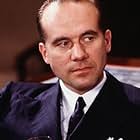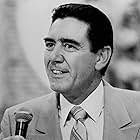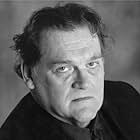After the end of World War II, a famous German conductor is accused of loyalty to the Nazi regime. He argues that art and politics are separate. An investigator thinks otherwise.After the end of World War II, a famous German conductor is accused of loyalty to the Nazi regime. He argues that art and politics are separate. An investigator thinks otherwise.After the end of World War II, a famous German conductor is accused of loyalty to the Nazi regime. He argues that art and politics are separate. An investigator thinks otherwise.
- Awards
- 9 wins & 3 nominations
Storyline
Did you know
- TriviaTaking Sides (2001) was shot on location in Germany with the dialogue in German and English, although in the version released in the US and the UK the dialogue is only in English.
- GoofsWhen Major Arnold is listening to the recording of Beethoven's Fifth Symphony, the record finishes the first movement and carries straight on to the second. Long playing albums, which ran at 33 1/3 rpm, were introduced in 1948, but the record shown is a 78 rpm one. The performance of the 5th Symphony would have been on a set of five 78 rpm records, one movement each, split over the two sides. It should not be possible for the second movement to start without the record being changed.
- Quotes
Emmi Straube: When he made his decision, he couldn't have known everything. Especially not the way people like you do, who've returned from exile and feel that you have a right to pass judgement. Because you are blameless, you think you know best who is a sinner and who deserves forgiveness. But you have no idea how people lived here.
- ConnectionsEdited into Taking Sides Again (2004)
In a scene as heartwrenching as any I've seen in any film, Furtwangler attempts to present his carefully prepared philosophy of art. To say that he is rudely interrupted is an understatement. I cried for him, and for humanity.
Keitel depicts a driven man who wants justice, but who arrived too late to exact it. Nazism's victims are already dead. He can't save them. And, so, he embarks on a Quixotic quest to bring down a man whose relationship to Nazism is questionable.
Keitel's character wants desperately for the world to be painted in black and white, with heroes on one side and devils -- a word he uses -- on the other. At a key moment, his secretary, whose WW II family history is pertinent, makes a key disclosure that might have served to widen and deepen his view of the world. But this is a man who does not want a wider or deeper view of the world. He wants justice, something others might call revenge.
Moritz Bleibtreu, Birgit Minichmayr and Ulrich Tukur are poignant, heart breaking, and thought provoking in smaller roles.
Kudos to Ronald Harwood for his merciless script. Like characters on screen, I often wanted to take a break, to say, "This is just too much." The script falls like a hammer on very difficult issues.
- Danusha_Goska
- May 13, 2007
- Permalink
- How long is Taking Sides?Powered by Alexa
Details
- Release date
- Countries of origin
- Languages
- Also known as
- Думки сторін
- Filming locations
- Production companies
- See more company credits at IMDbPro
Box office
- Budget
- $20,000,000 (estimated)
- Gross US & Canada
- $188,952
- Opening weekend US & Canada
- $22,051
- Sep 7, 2003
- Gross worldwide
- $422,832
- Runtime1 hour 48 minutes
- Color
- Sound mix
- Aspect ratio
- 1.85 : 1
Contribute to this page



































